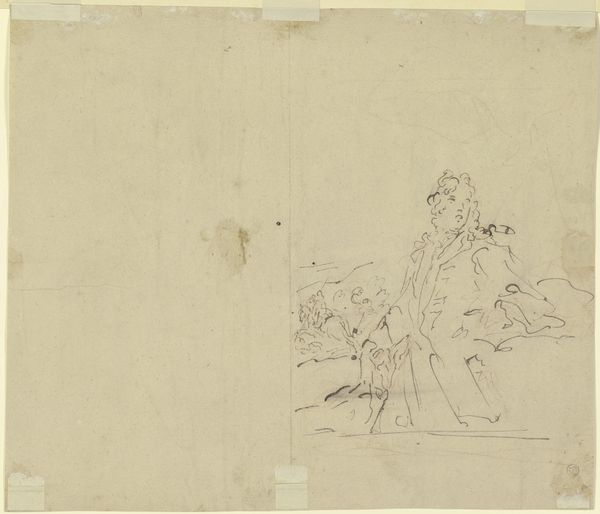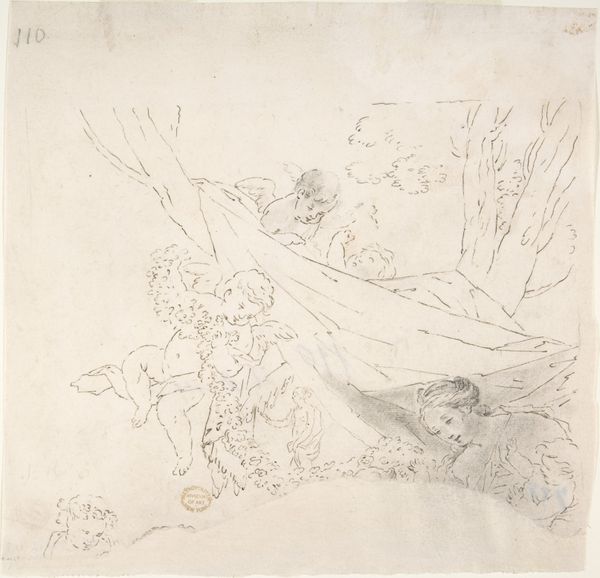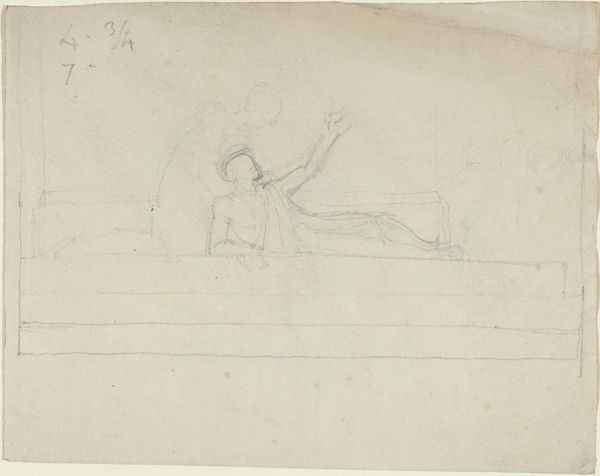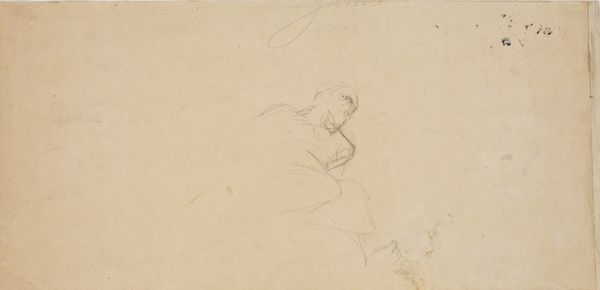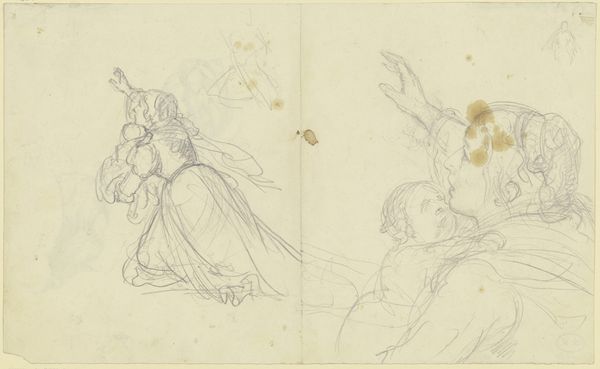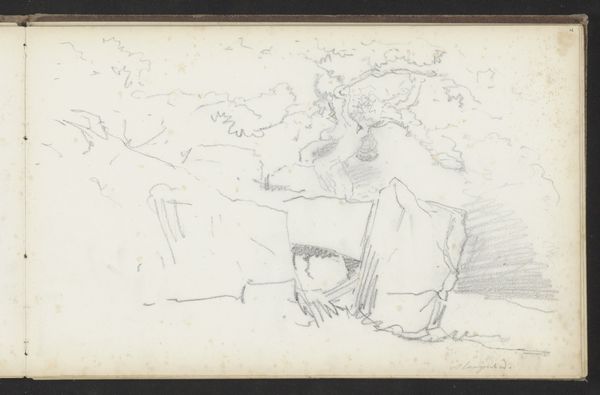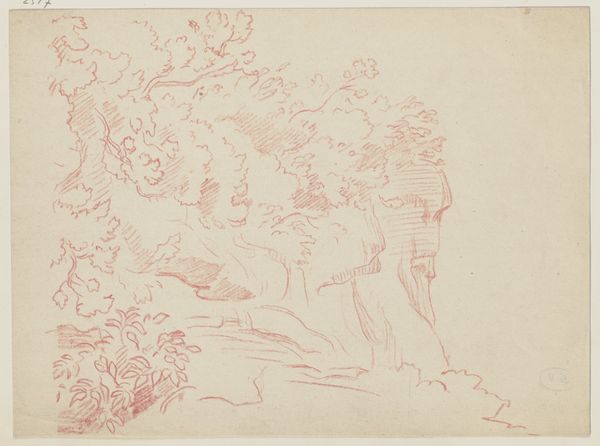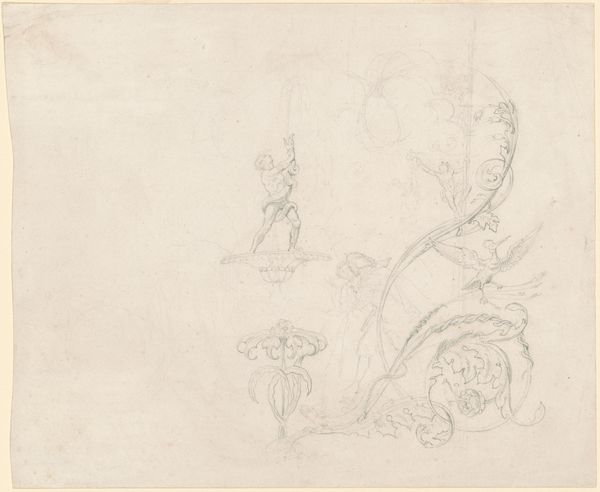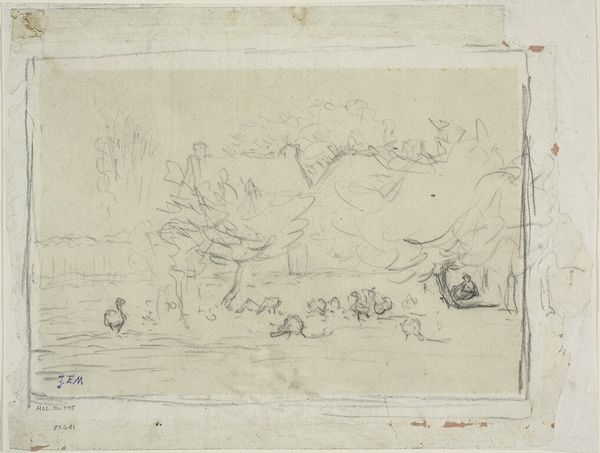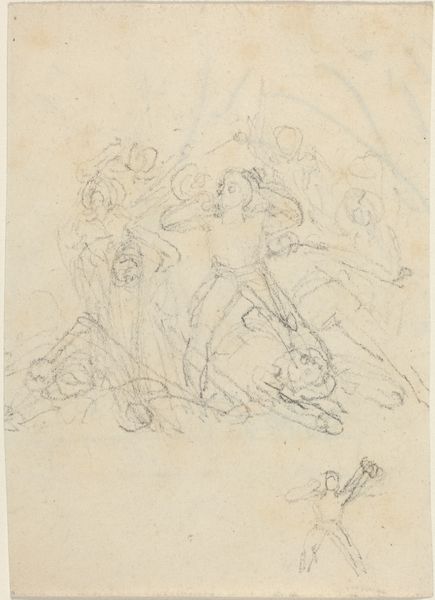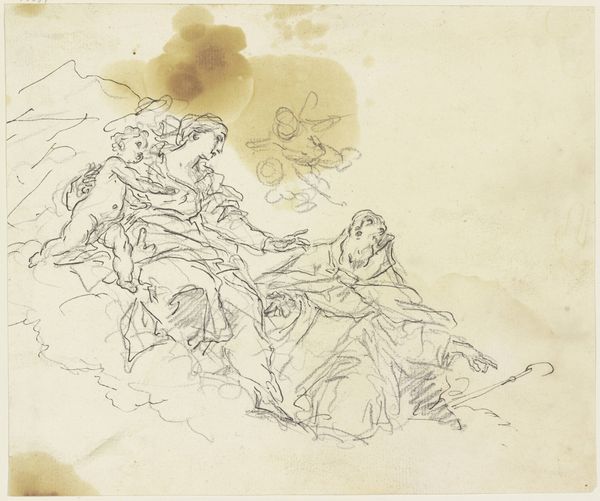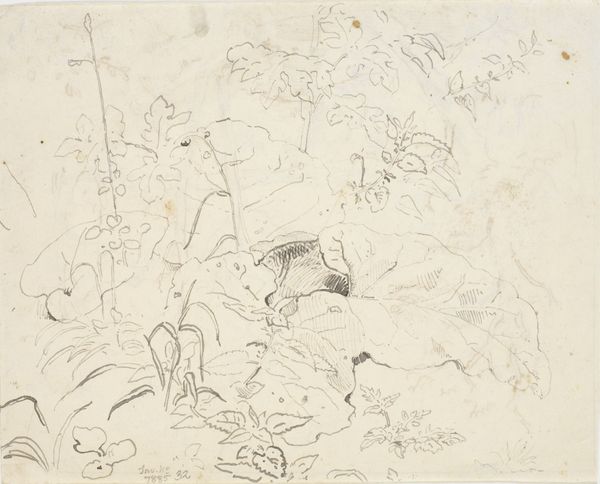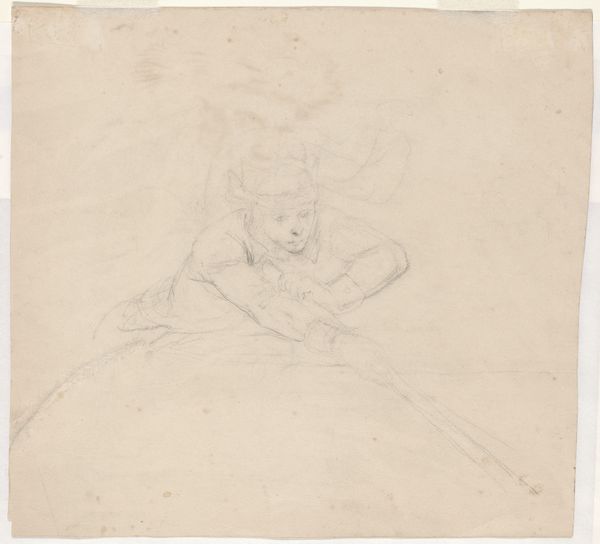
drawing, paper, pencil
#
drawing
#
16_19th-century
#
narrative-art
#
landscape
#
figuration
#
paper
#
pencil
#
history-painting
Copyright: Public Domain
Curator: Looking at this preliminary sketch by Victor Müller, titled "The Princess and the Frog" one immediately senses an ethereal, almost dreamlike quality, don’t you think? Editor: Absolutely, it’s incredibly evocative even in its unfinished state. I'm immediately drawn to the central figure of the princess; there's such vulnerability in her posture. And the frog, barely a few lines, but brimming with implied significance. It makes you think about transformation, doesn't it? Curator: Indeed. It is fascinating to view Müller’s rendering of a fairy tale as rooted in social mores of his period, probably sometime in the mid-19th century, evidenced through his draftsmanship of landscapes and historical settings. Note, for example, the well’s structure-- it is rather representative of a more utilitarian, working class association to a place for drawing water. The setting places the princess away from her inherited status in this liminal public space. Editor: Yes, and consider the symbolic weight of the frog itself. Frogs are often linked to ideas of fertility, the unconscious mind, even ugliness transformed into beauty. Here, that symbolic transformation is still held as possibility. What is interesting about using a pencil on paper to record it for later contemplation. Curator: Precisely, the medium itself offers transparency to its intended creation, especially for an allegorical tale as complex as “The Frog Prince.” Müller positions the story inside a growing debate around the importance of traditional social values and a brewing shift to a more secular perspective of myth-making. Editor: A compelling point. The act of placing a familiar narrative within a contested socio-political climate adds depth to both its symbolic charge and Müller's vision for storytelling. This simple medium underscores the accessibility and adaptability of storytelling, where these age-old concepts of character, setting, and plot are placed to the audience to render complete, much like its form on paper here. Curator: It is the socio-political openness combined with universal meaning that enables the iconographic translation, if you will. A sketch of a moment on paper presents possibilities of public reflection and change through the tale's moral itself. Editor: Looking closer, I think I will carry that impression with me, too—how the raw qualities in Victor Müller's unfinished sketch amplifies the potential found within "The Frog Prince".
Comments
No comments
Be the first to comment and join the conversation on the ultimate creative platform.
